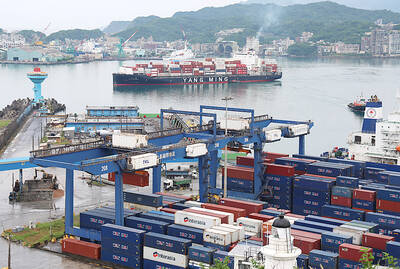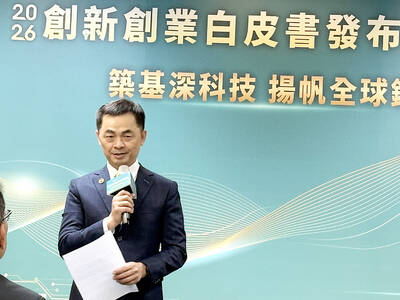Samsung Electronics Co built the world’s largest smartphone business by tapping China’s cheap and abundant workforce, but is now shifting output to Vietnam to secure even lower wages and defend profit margins as growth in sales of high-end handsets slows.
By the time a new US$2 billion plant reaches full production in 2015, China’s communist neighbor will be making more than 40 percent of the phones that generate the majority of Samsung’s operating profit.
The Suwon, South Korea-based company’s second handset factory in Vietnam is due to begin operations in February, according to a Nov. 22 statement posted on the Web site of the local government where the plant is located.
“The trend of companies shifting to Vietnam from China will likely accelerate for at least two to three years, largely because of China’s higher labor costs,” said Lee Jung-soon, who leads a business incubation team of the Korea Trade-Investment Promotion Agency in Ho Chi Minh City. “Vietnam is really aggressive in fostering industries now.”
Hanoi has approved US$13.8 billion of new foreign projects this year through Nov. 20, a 73 percent increase on a year earlier, according to the General Statistics Office in Hanoi. Of this, South Korea led with US$3.66 billion.
Intel Corp, the world’s largest chipmaker, opened a US$1 billion assembly and testing plant in Ho Chi Minh City in 2010. Nokia Oyj said its facility near Hanoi producing Asha smartphones and feature handsets became fully operational in the third quarter.
LG Electronics Inc is building a new 400,000m2 complex to make televisions and appliances as part of a US$1.5 billion investment plan.
“The country is politically stable and has a young, increasingly well-educated workforce,” LG said in an e-mailed statement. “Like [South] Korea, Vietnam understands what it takes to rebuild an economy after a devastating war.”
Samsung’s new plant is expected to make 120 million handsets a year by 2015, said two people familiar with the company’s plans, who asked not to be identified because the matter is private. That would double the current output from the country and compares with the 400 million global total Samsung shipped last year.
With about one-third of the global smartphone market, Samsung may eventually produce as many as 80 percent of its handsets in Vietnam, said Lee Seung-woo, an analyst at IBK Securities Co in Seoul who has been tracking the company for more than a decade.
“The handset business is all about assembling well-sourced components,” Lee Seung-woo said. “The most important thing is manpower.”
After setting up in China in 1992, Samsung now has 13 manufacturing sites and seven research laboratories there, according to its June sustainability report. The 45,660 employees in China make up more than 19 percent of Samsung’s global workforce, the largest source of labor outside South Korea, it said.
Record economic growth that made China the second-biggest economy has fueled wage inflation, pricing many workers out of low-end jobs. The base monthly salary for a factory worker in Beijing was US$466 last year, compared with US$145 in Hanoi, according to a survey of pay conducted by the Japan External Trade Organization.
“The rule of the game is now changing to how much market share you can win over rivals,” LIG Investment & Securities Co analyst Hong Sung-ho said from Seoul. “Many companies are now scratching their heads to figure out how to cut manufacturing costs.”
Samsung’s complex in the Yen Binh Industrial Zone of Thai Nguyen Province, north of Hanoi, will pay no tax for the first four years and half the full rate the following 12 years, the local government’s Web site shows.
While tax breaks and cheap workers are lures that other countries such as India and Indonesia could offer, Vietnam’s closer location to existing Samsung production bases in China and South Korea is an extra incentive, said Than Trong Phuc, managing director of technology-focused investment fund DFJ VinaCapital LP in Ho Chi Minh City.
“Other countries can match or even beat the incentives that Vietnam is offering, but Vietnam is very close to Samsung’s supply chain,” Phuc said. “You see [South] Korean companies everywhere you look in Vietnam, right and left.”

CHIP RACE: Three years of overbroad export controls drove foreign competitors to pursue their own AI chips, and ‘cost US taxpayers billions of dollars,’ Nvidia said China has figured out the US strategy for allowing it to buy Nvidia Corp’s H200s and is rejecting the artificial intelligence (AI) chip in favor of domestically developed semiconductors, White House AI adviser David Sacks said, citing news reports. US President Donald Trump on Monday said that he would allow shipments of Nvidia’s H200 chips to China, part of an administration effort backed by Sacks to challenge Chinese tech champions such as Huawei Technologies Co (華為) by bringing US competition to their home market. On Friday, Sacks signaled that he was uncertain about whether that approach would work. “They’re rejecting our chips,” Sacks

Taiwan’s exports soared 56 percent year-on-year to an all-time high of US$64.05 billion last month, propelled by surging global demand for artificial intelligence (AI), high-performance computing and cloud service infrastructure, the Ministry of Finance said yesterday. Department of Statistics Director-General Beatrice Tsai (蔡美娜) called the figure an unexpected upside surprise, citing a wave of technology orders from overseas customers alongside the usual year-end shopping season for technology products. Growth is likely to remain strong this month, she said, projecting a 40 percent to 45 percent expansion on an annual basis. The outperformance could prompt the Directorate-General of Budget, Accounting and

NATIONAL SECURITY: Intel’s testing of ACM tools despite US government control ‘highlights egregious gaps in US technology protection policies,’ a former official said Chipmaker Intel Corp has tested chipmaking tools this year from a toolmaker with deep roots in China and two overseas units that were targeted by US sanctions, according to two sources with direct knowledge of the matter. Intel, which fended off calls for its CEO’s resignation from US President Donald Trump in August over his alleged ties to China, got the tools from ACM Research Inc, a Fremont, California-based producer of chipmaking equipment. Two of ACM’s units, based in Shanghai and South Korea, were among a number of firms barred last year from receiving US technology over claims they have

BARRIERS: Gudeng’s chairman said it was unlikely that the US could replicate Taiwan’s science parks in Arizona, given its strict immigration policies and cultural differences Gudeng Precision Industrial Co (家登), which supplies wafer pods to the world’s major semiconductor firms, yesterday said it is in no rush to set up production in the US due to high costs. The company supplies its customers through a warehouse in Arizona jointly operated by TSS Holdings Ltd (德鑫控股), a joint holding of Gudeng and 17 Taiwanese firms in the semiconductor supply chain, including specialty plastic compounds producer Nytex Composites Co (耐特) and automated material handling system supplier Symtek Automation Asia Co (迅得). While the company has long been exploring the feasibility of setting up production in the US to address